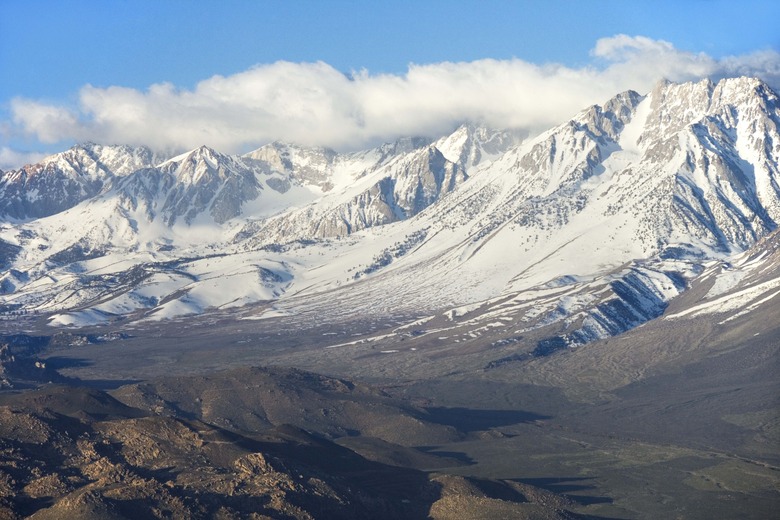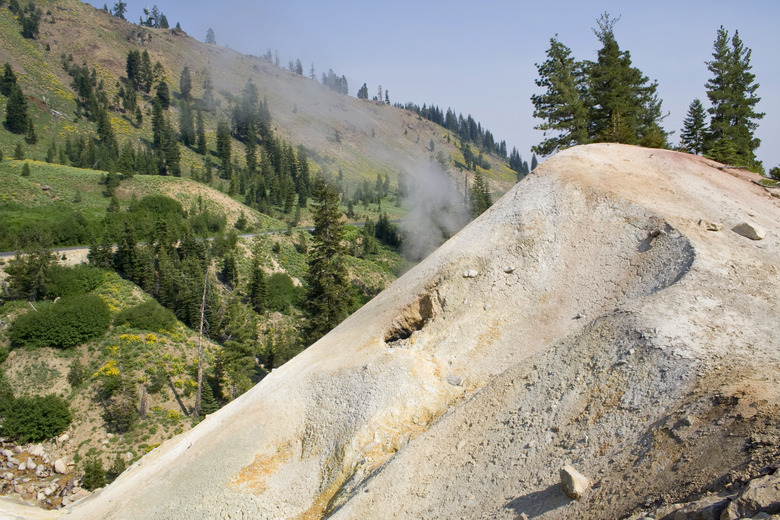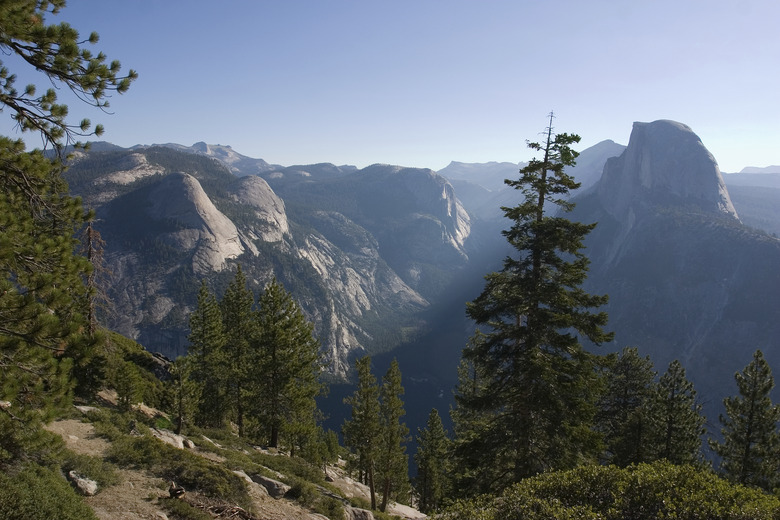Sierra Nevada Mountain Facts For Kids
The Sierra Nevada mountains are a range of mountains that extends over 600 miles from Mexico to Butte County in the north, where the Cascade range begins. Forming the eastern "backbone" of the state of California, the Sierra range, which is about 65 miles wide on average, is considered to be young and active when compared to other ranges around the rest of the United States. This means that the Sierra Nevada Mountains are continuously being built by the shifting of the earth's tectonic plates. This mountain range has a wide variety of weather types from heavy rains to high winds to bright sunshine to snow. It has an even greater variety of plant and animal life as well as interesting geology.
Geology
Geology
According to the U.S. Geological Survey, the region of the Sierra Nevada Mountains provides evidence of ongoing mountain building, which means that the shape and movement of these mountains are influenced by the shifting of tectonic plates beneath the earth's surface. Because of all this shifting, this region is also peppered with volcanoes. The most impressive, Mt. Shasta, rises 14,180 feet above sea level in the Cascade range, about 80 miles south of the Oregon border. The Sierras host the tallest peak in the continental United States — Mt Whitney (elevation 14,505 feet). It is less than 100 miles west of Death Valley, the lowest point in North America.
The Sierra Nevada Mountains are comprised mostly of granite that was formed from the lava of volcanoes. This mountain range is considered young because it started to emerge from the earth due to the erosion of the volcanic rock only about 5 to 20 million years ago.
Lake Tahoe
Lake Tahoe
One of the most famous lakes in the United States is found in the Sierra Nevada Mountains: Lake Tahoe. Lake Tahoe spans a 21-mile by 12-mile area and is an average of 1000 feet deep. Lake Tahoe is also known as the jewel of the Sierra Nevada Mountains. It is heavily protected by the U.S. Government in order to support and preserve its natural beauty, although many parts are open to outdoor sports like boating, rafting, swimming and visiting the beaches. The area is also guarded against wildfires, which can occur at random times due to the dry summer climate.
Conservation and Foliage
Fifteen percent of the Sierra Nevada Mountains is listed as designated conservation land. Most of the lower portions of the mountain range, however, are privately owned and conservation of the land is left up to the landowners. Because of this, the biodiversity — the variations of thriving plant life — is considered to be vulnerable. The Sierra Nevada Mountains are a mixture of various types of pine trees, pine and oak woodlands and grasslands. It is home to giant sequoias, which grow at elevations between 5,000 and 7,000 feet on the western slope. The largest, known as General Sherman, has a height of 275 feet and a width of 100 feet and is the largest tree in the world. Timber harvest, agricultural development, recreation, animal trapping and mining are some of the most common activities in and around the area.
Nature
The Sierra Nevada Mountains are well-known for their vibrant display of wildflowers in the summers and their mild climate. Although the highest parts of the Sierra Nevada Mountains still have some snow in the summer, the temperatures are generally mild to slightly cool, and many people take advantage of the generally pleasant summer weather to engage in outdoor activities like hiking, boating and enjoying the beaches of Lake Tahoe. The rainy season lasts from October to May and, during that time, the higher elevations can receive as much as 30 feet of snow, which makes them ideal for skiing. Winter is also a favorite season for sightseers in Yosemite National Park, located roughly in the midpoint of the Sierras.
Cite This Article
MLA
Purdy, Alicia. "Sierra Nevada Mountain Facts For Kids" sciencing.com, https://www.sciencing.com/sierra-nevada-mountain-kids-7979134/. 19 April 2018.
APA
Purdy, Alicia. (2018, April 19). Sierra Nevada Mountain Facts For Kids. sciencing.com. Retrieved from https://www.sciencing.com/sierra-nevada-mountain-kids-7979134/
Chicago
Purdy, Alicia. Sierra Nevada Mountain Facts For Kids last modified March 24, 2022. https://www.sciencing.com/sierra-nevada-mountain-kids-7979134/


